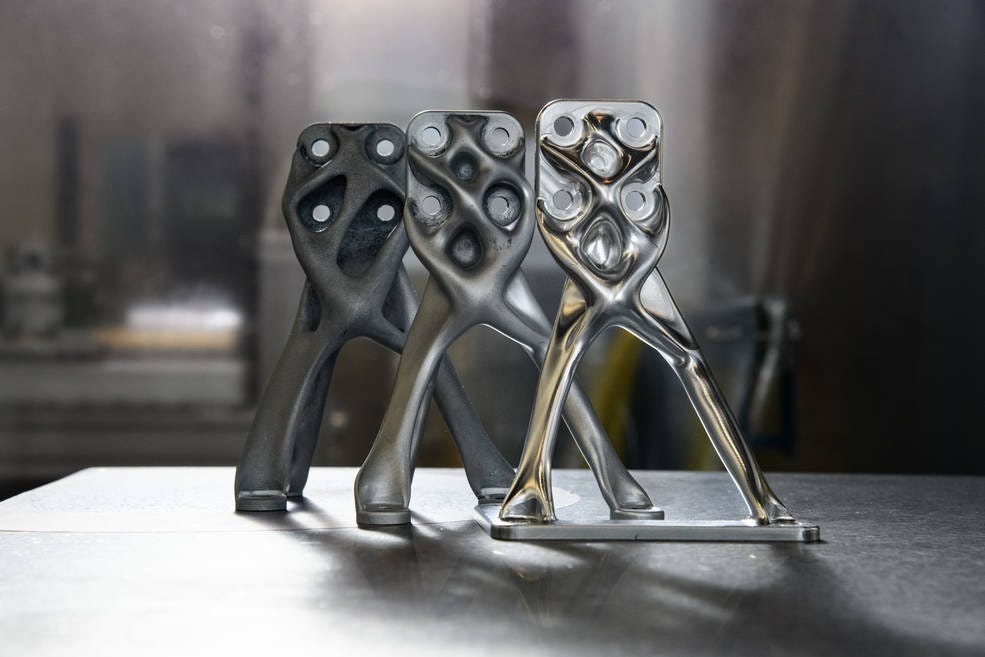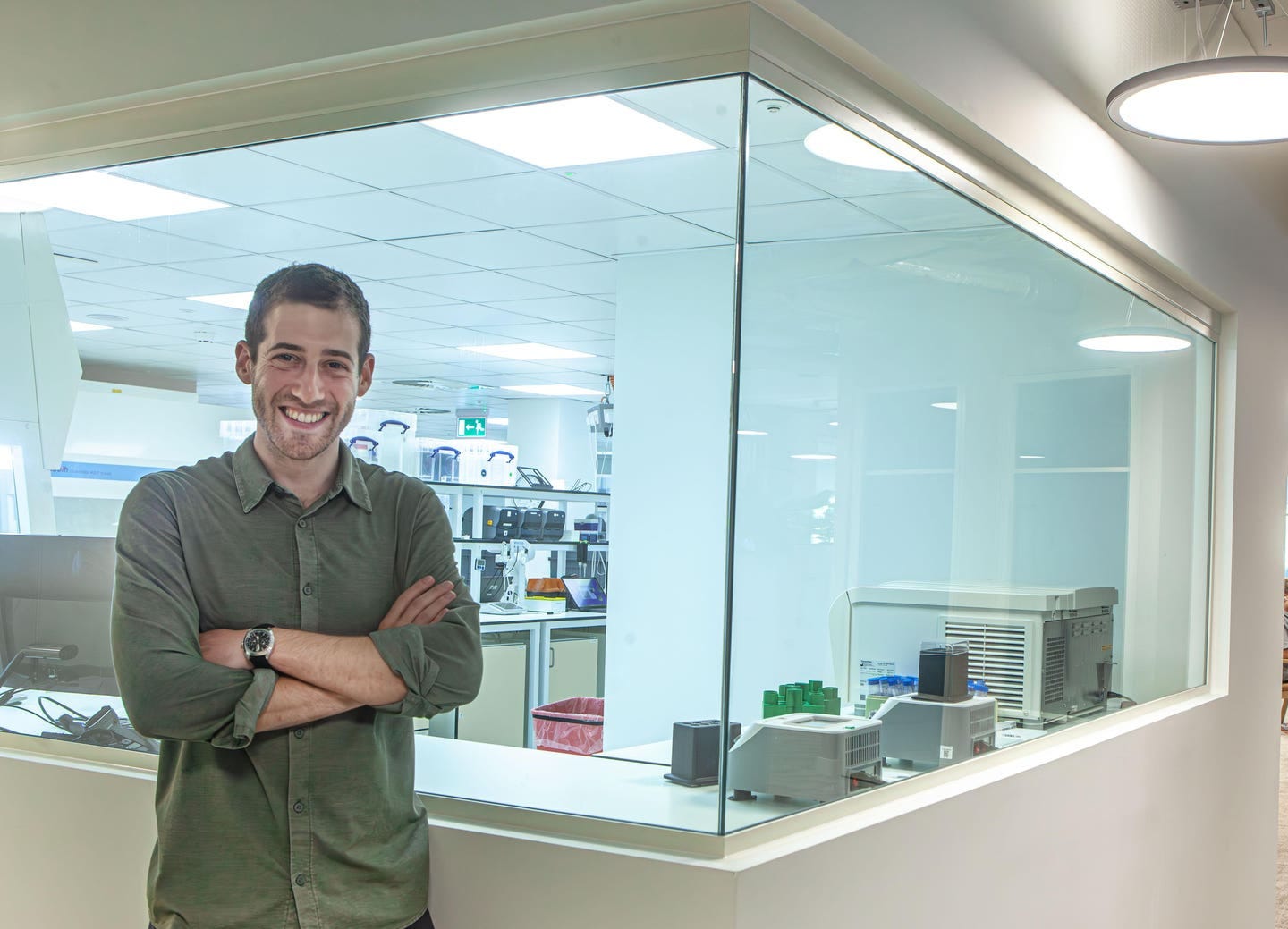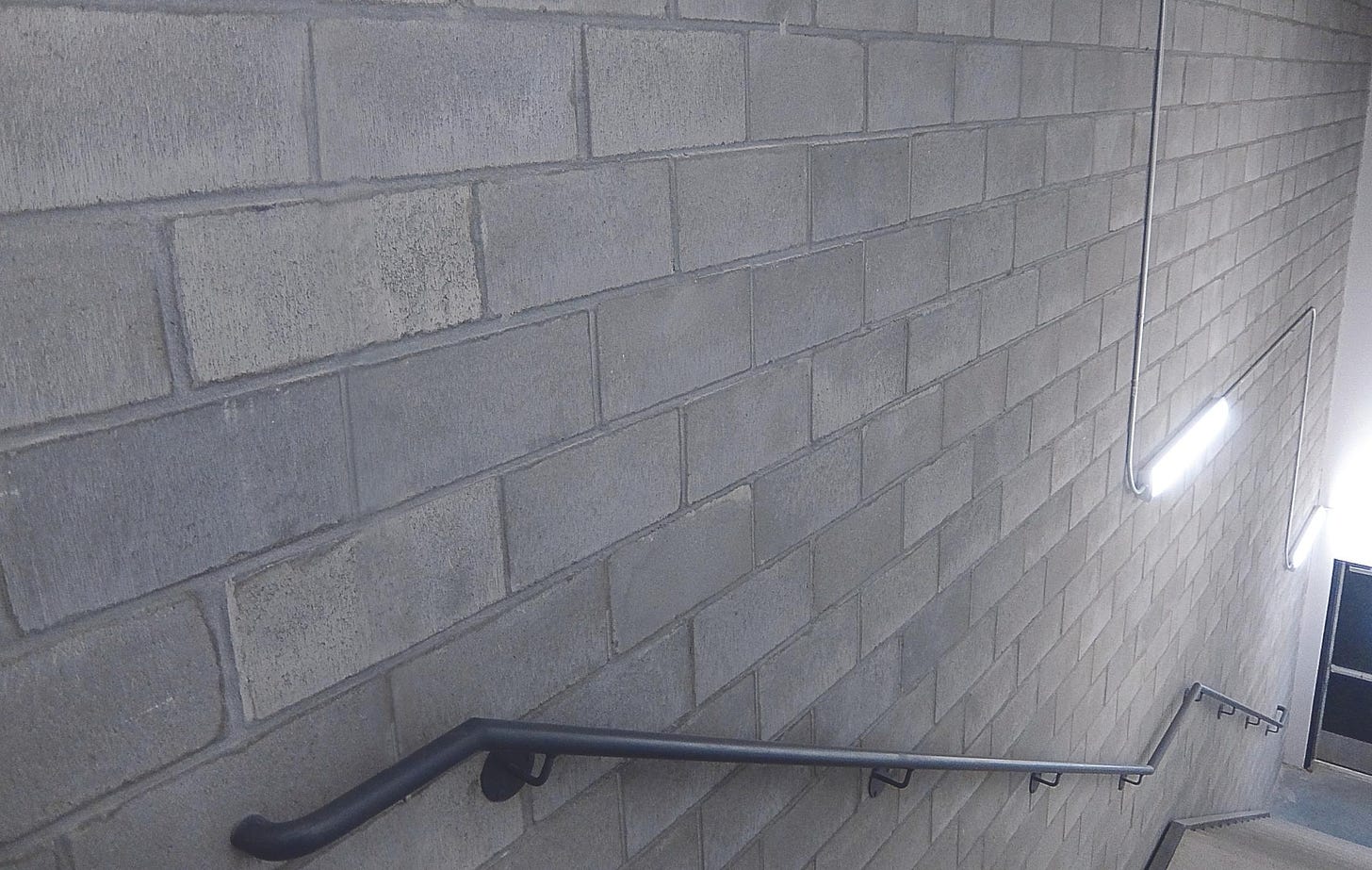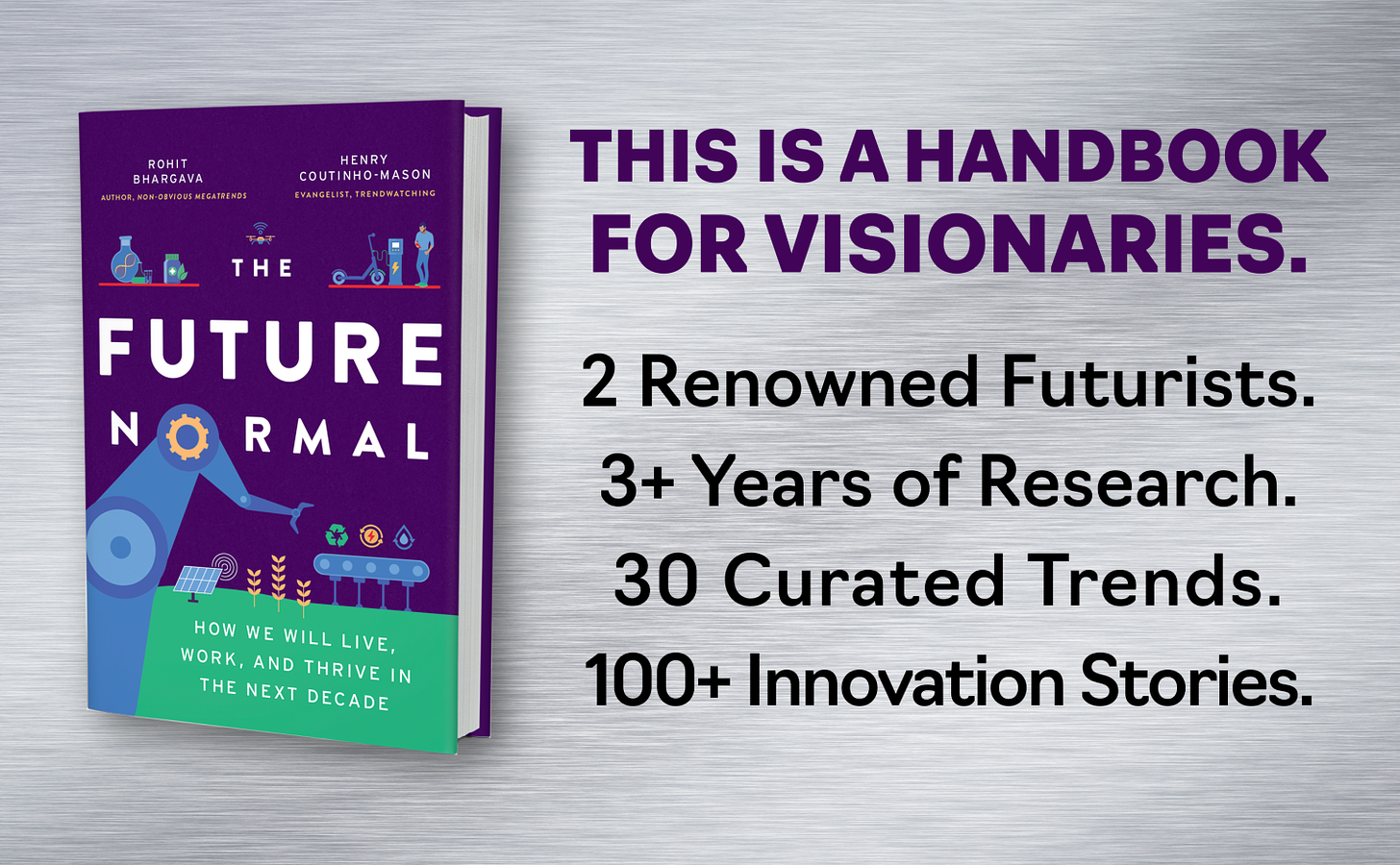The Future Normal: Real Estate
💡5 big, non-obvious questions & cross-industry innovations to inspire you.
This is the second in a series of pieces focused on various key sectors, focusing on Real Estate. Don’t worry if you’re not directly in this space – this isn’t your typical industry trend report. Instead, you’ll find five big questions designed to provoke fresh perspectives on the future of real estate.
What if… the Experience Economy gets turned up to 11?
What if… AI could help us design cities that were better for people?
What if… living in the suburbs becomes more convenient than downtown?
What if… we bring manufacturing and even agriculture into cities?
What if… cities could actually capture CO2 emissions, instead of generating them?
Each question references a chapter from The Future Normal book, illustrated with a recent startup or new innovation from another industry. Looking up and outwards to adjacent industries will give you an edge when it comes to seeing what others miss.
Forward one (or all!) of these questions to your colleagues and say, “This is going to impact us. How can we turn this shift into an opportunity?”
On that note – we’re now deep into conference and strategic planning ‘season’, and my calendar is filling up.
Last week was a busy one, with keynotes at Future Hospitality Summit, Innocent Internal Marketing Day, World Horse Welfare board meeting, and ThriveLive!
Up next: 16-17 Oct, Flock leadership event, UK; 18-21 Oct, WPP Stream, Greece; 1-2 Nov, THIS conference, Aarhus, Denmark; 6 Nov, OPI Global Forum, Chicago; 7 Nov, Power of Print, London; 23 Nov Digital Copenhagen, Denmark.
If you’re planning an event or meeting before the end of the year, then do check out the videos, topics and testimonials on my speaking site.
1. What if… the Experience Economy gets turned up to 11?
City dwellers dive into the Experience Economy on a daily basis – surrounded by restaurants, galleries, and venues. In the book, we explore Immersive Experiences, saying:
While live performances have always offered a sort of sensory immersion, technology has accelerated the possibilities for just how deeply we can become part of an experience. This is the promise of immersive entertainment. We don’t just watch the show, we become part of it in ways that are enhanced by technology but remain visceral, physical, and memorable.
Innovation inspiration: The Sphere takes live experiences to another level.
On the one hand, experiences should be deeply personal. About the moment, for you. Yet at the same time, a huge part of their value lies in sharing the moment with others, both in-person as part of a crowd and of course, virtually on social media.
The Sphere, in Las Vegas (where else?), takes this to another level. Costing over $2 billion, the venue has the world’s largest and highest resolution screen, is the world’s biggest spherical building, and has over 1.2 million LEDs on its exterior, along with 1,600 speakers and 10,000 haptic seats. But enough statistics. Watch the videos. Even on your phone you will get a sense of its scale and impact.
What does this mean for real estate? Every developer or city loves to throw around terms like ‘unique’, or ‘flagship’. But the Sphere shows that in the future normal the (digital) sky really is the limit when it comes to experiences.
2. What if… AI could help us design cities that were better for people?
We wrapped up writing The Future Normal just weeks after ChatGPT was released. Yet even in that short time its power was clear. In our chapter on Augmented Creativity, we said:
Generative AI will reduce the time, effort, and skills that millions of white-collar workers need to do their jobs. Creators will be inspired by and leverage AI to speed up their creative output and spend less time on the more mundane aspects of bringing creative ideas to life.
Innovation inspiration: NASA turns to AI to Design Space Parts
While the experiences of the past nine months have firmly validated what we wrote above, if anything we didn’t go far enough. AI copilots are helping professionals do their work faster and with less effort. But there’s ample evidence that AI can be more creative than humans.
Indeed, I love the story about how NASA is using AI to design hardware for space missions. As research engineer Ryan McClelland says, “They look somewhat alien and weird, but once you see them in function, it really makes sense.” Incredibly the agency “found it actually lowers risk. After these stress analyses, we find the parts generated by the algorithm don’t have the stress concentrations that you have with human designs. The stress factors are almost ten times lower than parts produced by an expert human.”
Large-scale construction projects are similarly complex. Sidewalk Labs has a product called Delve, a generative design tool. In a case study, the company shows how the tool enabled a UK-developer to increase the number of units in a development, while also making each unit bigger, while also increasing residents’ access to light and open space. Win-win-win.
If you’re only asking how AI can make you more efficient then you’re missing a trick. See how and where it can help you unlock better outcomes (and remember, defining ‘better’ is still a job for humans given AI’s current biases).
3. What if… living in the suburbs become more convenient than downtown?
As we write in The Future Normal, “there is perhaps no symbol more iconic (and overused) than autonomous drones circling overhead”. And despite years of unfulfilled hype it appears we are close to a tipping point – countless startups in multiple countries are now successfully operating large-scale pilot programs successfully.
Innovation inspiration: Wing installs drone delivery hub on Logan’s Hyperdome shopping mall
If you want a small signal of a potentially huge implication of widespread drone delivery then look to Australia where last month Wing partnered with the Hyperdome shopping mall in Australia to offer drone deliveries to 17 local suburbs.
The past few decades have seen a massive shift in global living patterns as hundreds of millions of people moved back into city centres. But more than that, we saw an epic shift in aspiration, as the Experience Economy converged with the Flat White Economy*, as hipsters flaunted their status by working on Macbooks in artisan coffee shops while looking down on car-dependent McMansion owners in the suburbs, driving to their sad, tired malls. I joke, but barely…
Looking ahead – could drone delivery flip this? When drone deliveries are quicker, cheaper and cleaner (both ethically and environmentally!) – then it will be the suburban residents that pity their urban neighbours, with their slow, expensive, gig economy-worker bike deliveries. What will this do to real estate markets? We’re not there yet, but it’s a thought experiment that is worth playing out.
* Adding ‘Economy’ to any phenomenon makes it sound much more important ;)
4. What if… we bring manufacturing and even agriculture into cities?
Often the most profound insights about the future can be found in statements that challenge our expectations about what is possible. For example, in our chapter on Nu-Agriculture we quote Dr. Pasi Vainikka, the CEO of Solar Foods, who has said that “the disconnection of food from agriculture—that’s the secret to a sustainable food industry.”
Innovation Inspiration: Hoxton Farms opens its first cultivated fat production facility in Central London.
We need people to eat less meat, yet many people resist cutting out meat because they like the taste and sensory experience of eating it. Which is why this story is so exciting for food companies and humanity at large – Hoxton Farms is a biotech startup focused on producing cultivated fat, which is exponentially easier and cheaper than trying to make full steaks or chicken breasts.
But there’s another, non-obvious implication to the story about the opening of its first production plant in Central London that’s directly relevant to real estate professionals, which is that Hoxton Farms is just one example of how radically different cities will look as we enter the new era of synthetic biology. C16 Biosciences is a similar company which produces synthetic palm oil – yet instead of requiring hectares of rainforest to be cut down in Southeast Asia, it is based in Manhattan.
We hear a lot about how remote and hybrid working is hollowing out city centres. But as materials become divorced from their ‘natural’ roots, producers such as Hoxton Farms and C16 Biosciences will move into cities for the same reason that professional services firms did – for improved access to capital and talent. Perhaps in the city of the future you won’t be able to move for wet labs, rather than WeWorks…
5. What if… cities could actually capture CO2 emissions, instead of generating them?
The Future Normal is an unashamedly optimistic book, and nowhere more than in our final chapter, Beyond Net Zero:
As we write this final chapter in our exploration of the future normal, it seems fitting to focus on the emerging cadre of regenerative businesses attempting to go beyond zero impact, aiming to create products and services that actually do good. In the future normal, we will see an acceleration in brands that go carbon negative, regenerate the environment, and leave a positive legacy on the planet.
…
The path to becoming a regenerative business is not easy. It might even be impossible, given the multiple impacts that every organization has on the environment. It is seductive to focus on carbon emissions and net zero pledges. Reducing an organization’s carbon emissions to zero or even beyond is meaningful. But as we draw this aspirational overview of the future normal to a close, we believe we should aim even higher. Carbon emissions are not the only problem we face. Biodiversity, poverty and inequality, ill health. These are huge and thorny problems. Even if an organization can’t be universally regenerative, in the future normal, more will aspire to be as close to it as possible—environmentally, socially, and economically. As the artist Michelangelo famously said, “The greatest danger for most of us is not that our aim is too high and we miss it, but that it is too low and we reach it.”
Innovation Inspiration: CarbiCrete’s carbon-negative concrete blocks
This might look like just another concrete wall. It’s hardly an image you’ll rush to share with your colleagues. But its very innocuousness is exactly why it’s so exciting!
Instead of being made from cement, CarbiCrete’s concrete is made from steel slag, an industrial waste product which is cured in a process that captures 150 kg of CO2 for each ton of concrete. Oh, and the blocks are stronger and handle extreme temperature changes better than traditional ones. But the really exciting development is that last month, CarbiCrete announced that its cinder blocks were now available to purchase from Patio Drummond.
Even if you don’t work in real estate, you’re probably aware of how bad the concrete industry is for the environment. Clearly there’s a long way to go to make the billions of tonnes of concrete used each year into a positive. And your quest to go Beyond Net Zero shouldn’t stop at concrete. Which other materials and processes could be made positively regenerative?
What Is The Future Normal For Your Business?
The Future Normal: How We Will Live, Work & Thrive In The Next Decade, explores 30 trends, from continuous glucose monitoring to job sharing.
I also give inspiring, actionable presentations that help your team spot and seize emerging opportunities.
Get in touch if you'd like to discuss an upcoming event or project.
Or, sit back and enjoy the keynote that myself & Rohit Bhargava gave at SXSW to launch the book:
Thanks for reading,










